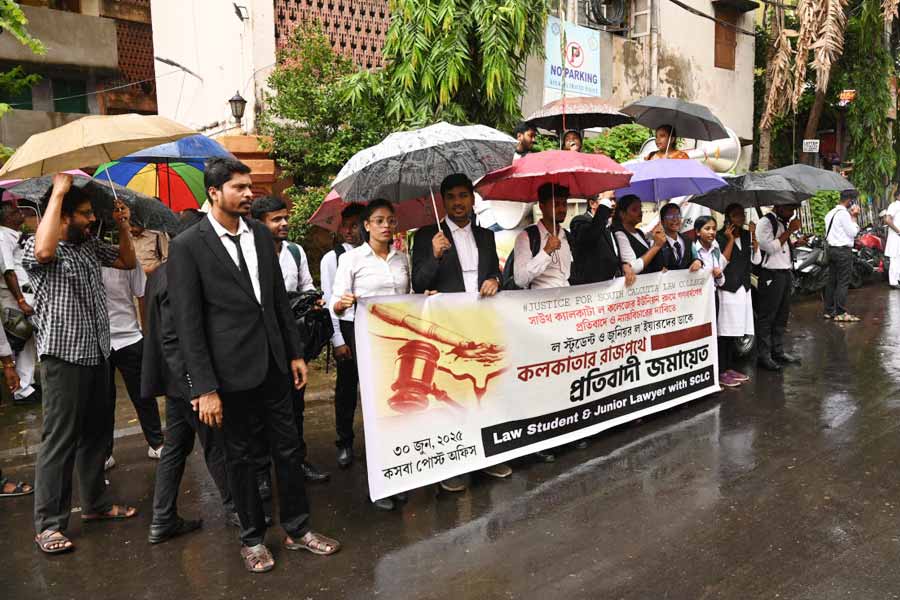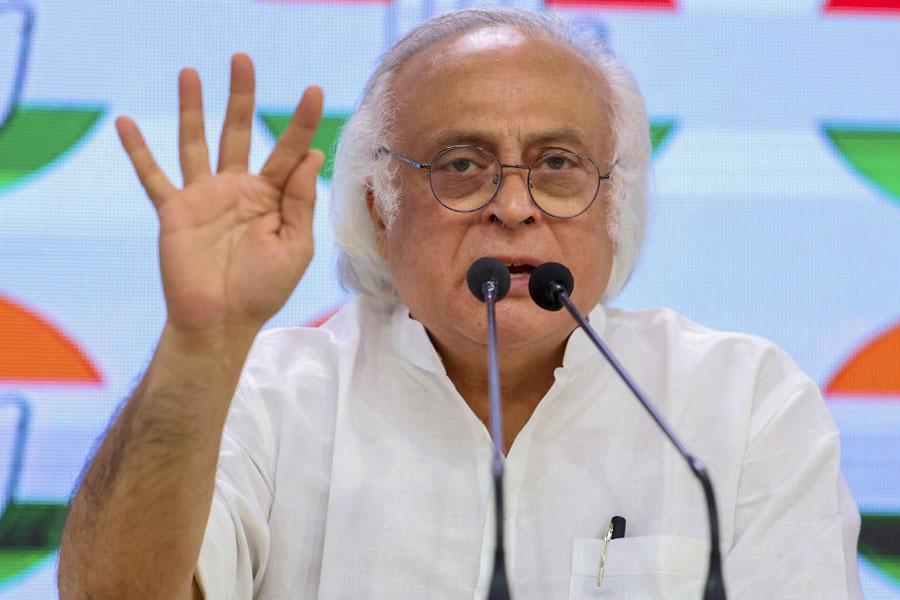New Delhi: A global consortium of scientists, including physicists from Calcutta, has detected waves from a cosmic collision that gave birth to gold.
The scientists, from 18 countries, have for the first time detected gravitational waves from the collision of two neutron stars and the associated fireball of gamma radiation and light.
The detection, described as the "birth of a new era in astronomy", has helped the scientists extract rich astronomical dividends, including insights into the origin of gold in the universe.
The physicists announced on Monday the results of their observations of the neutron stars' merger, first detected on August 17 and billed an "unprecedented discovery".
In the days after the initial detection, astronomers worldwide used an array of optical, X-ray, infrared, ultraviolet and radio telescopes for observations that have revealed the signatures of newly synthesised heavy elements such as gold, platinum and uranium.
"These studies confirm earlier predictions that neutron stars' collisions are cosmic factories for gold and some other heavy elements," said Tarun Souradeep, a senior scientist at the Inter-University Centre for Astronomy and Astrophysics, Pune, and the India spokesperson for the global gravitational wave consortium.
Their studies suggest the neutron stars -- stars that have exhausted their fuel and collapsed into compact city-sized spheres packed with neutrons -- collided in a galaxy, NGC4993, about 130 million light years away, producing gravitational waves and electromagnetic radiation.
This is the fifth time in the past two years that scientists have observed gravitational waves, feeble ripples in space-time predicted by Albert Einstein in 1915. But each of the earlier detections had emerged from the collisions of black holes, which do not emit electromagnetic radiation.
The two detectors in the US that make up the Laser Interferometer Gravitational Wave Observatory (Ligo) and the Virgo detector in Europe first observed the gravitational waves that lasted about 100 seconds. More than 70 ground and space-based observatories then followed up with astronomical studies.
"We're in the birth of a new era in astronomy, where a cosmic event is simultaneously studied through gravitational waves, gamma rays and light," said Rajesh Nayak, a physicist at the Indian Institute of Science Education and Research (IISER), Calcutta, and a member of the global research consortium.
The new signals provide the first conclusive evidence that neutron star collisions lead to gamma ray bursts, something astronomers had only speculated. The two-second gap between the arrival of the gravitational waves and the gamma rays suggests the waves travel at the speed of light, as predicted by Einstein.
About 40 scientists from 13 academic institutions in India are co-authors of the research paper announcing the discovery, published on Monday in the journal Physical Review Letters, by the consortium of over 1,200 scientists from 100-odd institutions worldwide.
At IISER Calcutta, Nayak and his students analysed the travelling behaviour of the gravitational waves emanating from the neutron star merger to determine that the behaviour was consistent with Einstein's predictions.
Scientists at the Pune centre looked for electromagnetic emissions from the neutron star merger; India's AstroSat space observatory helped narrow down the location of the gamma ray bursts; and India's Giant Metrewave Radio Telescope near Pune studied radio emissions from the merger.
"The gains from simultaneous studies of gravitational and light signals is already evident," said Dibyendu Nandi, a physicist at IISER who is not a member of the consortium. "We now have an independent confirmation of the value of the Hubble Constant, a key cosmic parameter that determines the behaviour and ultimate fate of the universe."
A longstanding goal of the Ligo consortium has been the near-simultaneous observation of cataclysmic events, such as neutron star mergers and supernovae explosions, through gravitational waves and light to extract astrophysical details that are unavailable through either alone.
The earlier gravitational wave signals had emerged from the mergers of black holes - massive stars that had collapsed under their weight into objects with such high gravity that not even light escaped them - which were not expected to generate light signals.
The new signals appear to have emerged from two neutron stars, about 1.1 to 1.6 times the mass of the Sun. Theoretical astrophysicists had already predicted that neutron star collisions should give off gravitational waves, gamma rays and electromagnetic signals.
"This event is so rich, it is a gift that will keep on giving," David Shoemaker, spokesperson for the Ligo scientific collaboration and a senior research scientist at the Massachusetts Institute of Technology, said in a news release issued by Ligo.
The studies, he said, are expected to generate new information about the "inner workings of neutron stars" as well as "more fundamental physics such as general relativity".
The Ligo consortium and other observational teams from across the world have described their findings in research papers published in multiple journals, including Nature and The Astrophysical Journal.
IISER, Calcutta director Sourav Pal said the institute would "strongly encourage" students to participate in the LIGO project "not just to use the LIGO detectors but also to take on the challenges of engineering and data mining".











